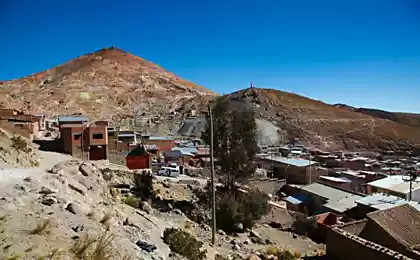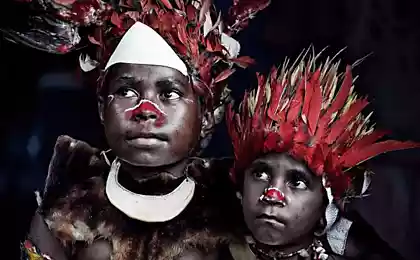4967
Jimmy Nelson. "As long as they have not disappeared"
A series of photos Jimmy Nelson who entered his photo project - "As long as they have not disappeared» (Before they pass away) tells about the amazing tribes living in different parts of our planet.
Jimmy Nelson (Jimmy Nelson) traveled to different countries, and took the indigenous peoples of the Pacific, New Guinea, the Far North, Small peoples of Chukotka. The number of some very small and at any time may disappear completely

"Asaro with the Eastern Mountains».
The members of this tribe were covered with mud the whole body, except for the persons. In this case, all the people of Papua New Guinea has long been believed that the mud from the river Asaro poisoned. Instead of covering their faces with this alleged poisonous mud, people Asaro started making masks from stones that were heated and washed with water from the waterfalls. Masks these unusual shapes and traditionally decorated with various elements, such as very short or very long ears, reaches the chin, eyebrows over the length of the connection ears, horns or mouths on the side. (Photo and caption by Jimmy Nelson)
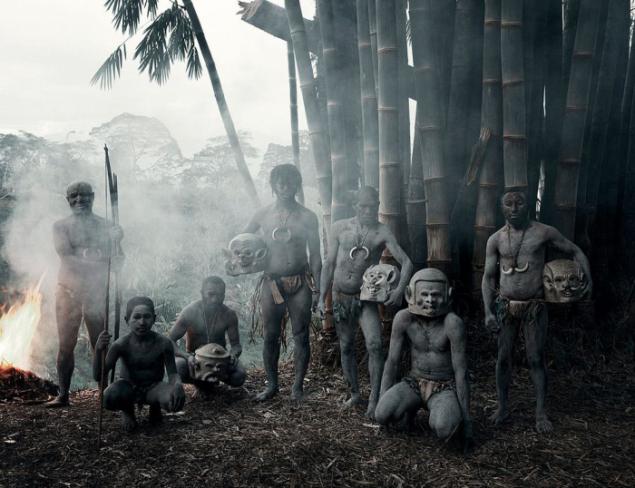
People tribe Asaro anoint themselves with mud, are frightening masks and brandishing spears.
According to legend, the "mud people" Defeat the enemy tribe and forced to flee to the river Asaro. The defeated tribe waited for the sunset, after which his men tried to escape. Enemies saw the dark figure rise from the river banks, all in the mud, and thought that they attack the river spirits. Terrified enemies Asaro ran back to his village. After that, all the neighboring villages converged on the view that the tribe Asaro helps the river itself. Smart elders saw this as an advantage and tried to do everything to spread the dirt tradition preserved. (Photo and caption by Jimmy Nelson)

"The Chukchi».
This ancient people living on the Chukotka Peninsula. Unlike other indigenous peoples of Siberia, Russian troops did not manage to conquer the Chukchi. But their culture and traditions suffered greatly during the Soviet period, as the vodka, and from environmental pollution. (Photo and caption by Jimmy Nelson)

Chukchi live on the mainland due to reindeer husbandry: they eat cooked venison, deer brain and bone marrow, as well as make the reindeer soup.
One of the traditional dishes prepared from the Chukchi semidigested moss from the stomach of the reindeer, mixed with blood, fat and pieces of cooked entrails of a deer. Kitchen coastal Chukchi based on meat walruses, seals, whales and marine algae. Both groups were fed frozen fish, as well as leaves and roots. Now Chukchi traditional dishes complemented canned vegetables and other products that they buy in stores. (Photo and caption by Jimmy Nelson)
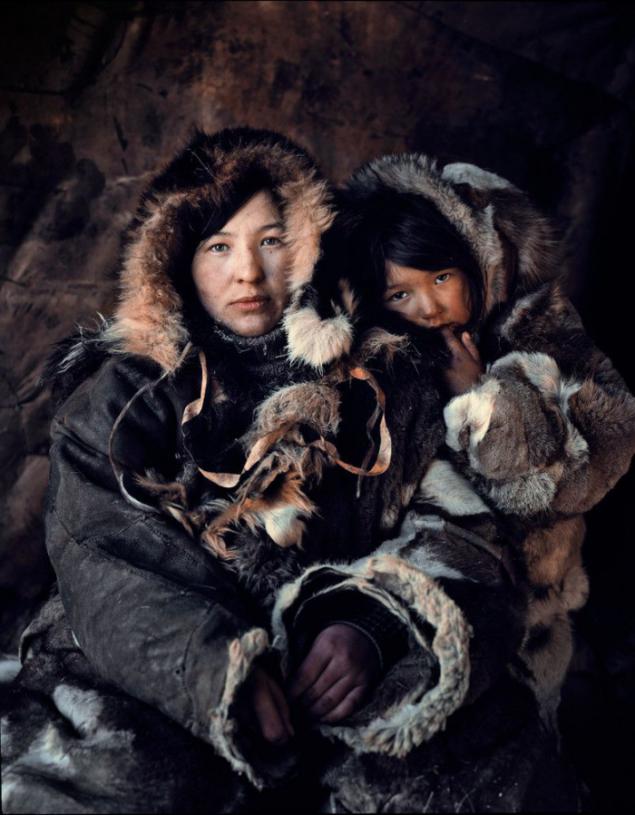
Carving on bone and walrus tusks - the most advanced forms of folk art among the Chukchi.
Common themes: landscapes and scenes of everyday life - hunting, grazing deer and wildlife Chukotka. In traditional society, the Chukchi all those involved only men. Women have a sewing and embroidery classes, they have obtained excellent. (Photo and caption by Jimmy Nelson)
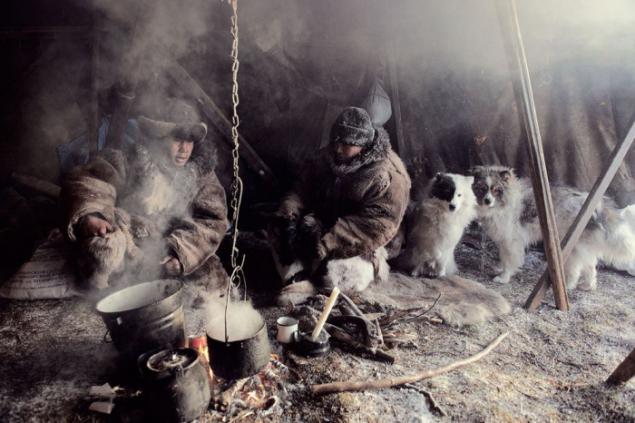
Due to the harsh climate and the complexities of life in the tundra hospitality and generosity are highly valued among the Chukchi. They believe that everything in this world has a soul. Traditional way of life is still preserved, but is constantly updated with something new. (Photo and caption by Jimmy Nelson)

"Goroka" (the capital of the province of Eastern Highlands Province in Papua - New Guinea).
The indigenous population of the second largest island in the world - one of the most non-uniform in the world. Harsh landscape and historical tribal war led to the destruction of vegetation and the appearance of different languages. Several different tribes scattered throughout the highlands. (Photo and caption by Jimmy Nelson)
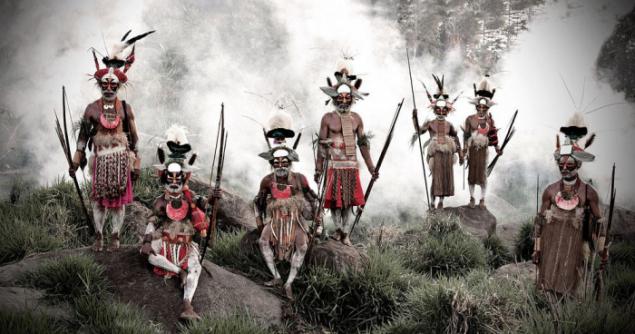
Life in the mountainous villages of simple. There are a lot of good food, family ties are highly valued, as well as the wonders of nature. Local live hunting, gathering and agriculture. Tribal feuds - it habitual, and a male warrior spare no effort and imagination to hit the enemy tribe of his war paint and decorations. (Photo and caption by Jimmy Nelson)

The boy from the tribe Goghin. (Photo and caption by Jimmy Nelson)

Himba - ancient tribe of tall, slender and majestic shepherds.
Since the XVI century they live in scattered settlements, leading virtually unchanged way of life, surviving a war and drought. The structure of the tribe helps them to live in one of the harshest habitats of the planet. (Photo and caption by Jimmy Nelson)

"Juli».
It is believed that the first inhabitants of Papua - New Guinea migrated to the island more than 45 000 years ago. Today, more than 3 million people, half a heterogeneous population lives on the local uplands. Some of these communities for thousands of years are an unceasing tribal conflict with its neighbors. (Photo and caption by Jimmy Nelson)
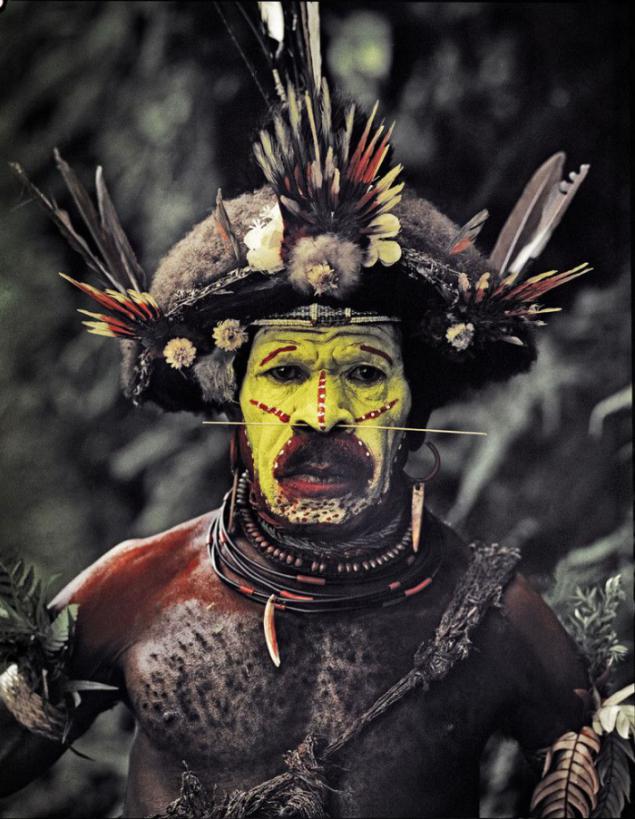
Tribes fighting over land, women and pigs.
Much attention is paid to how to impress the enemy. The largest tribe - paint their faces in yellow, red and white, and is famous for its tradition of making beautiful wigs from their own hair. Ax with hook completes this very frightening picture. (Photo and caption by Jimmy Nelson)

Tari Valley with magnificent views of the valley below and the surrounding peaks. This high mountain forests with thundering waterfalls. The local tribes live by hunting, which involved mostly men, as well as gathering and agriculture - this is followed by women. Men are helping to liberate the land, but responsibility for everything else is on women. (Photo and caption by Jimmy Nelson)

"Kalam».
The eastern half of New Guinea gained full independence from Australia in 1975, and when there was a state of Papua - New Guinea. Local indigenous people - one of the most diverse in the world. Traditionally, the different tribes scattered high plateau and live in small agricultural clans. (Photo and caption by Jimmy Nelson)

Hats decorated with feathers (cockatoos, parrots, lories and birds of paradise).
Small round shells kin hanging out of the hole in the nose, and some members of the tribe are inserted into the nose of the bird of paradise feathers. (Photo and caption by Jimmy Nelson)

These tribes live by hunting (men), as well as gathering and agriculture (women). (Photo and caption by Jimmy Nelson)

Kazakhs - the descendants of Turkic, Mongolian and Indo-Iranian tribes and the Huns, who inhabited the territory between Siberia and the Black Sea.
This semi-nomads who wandered with their herds in the mountains and valleys of western Mongolia to the XIX century. (Photo and caption by Jimmy Nelson)
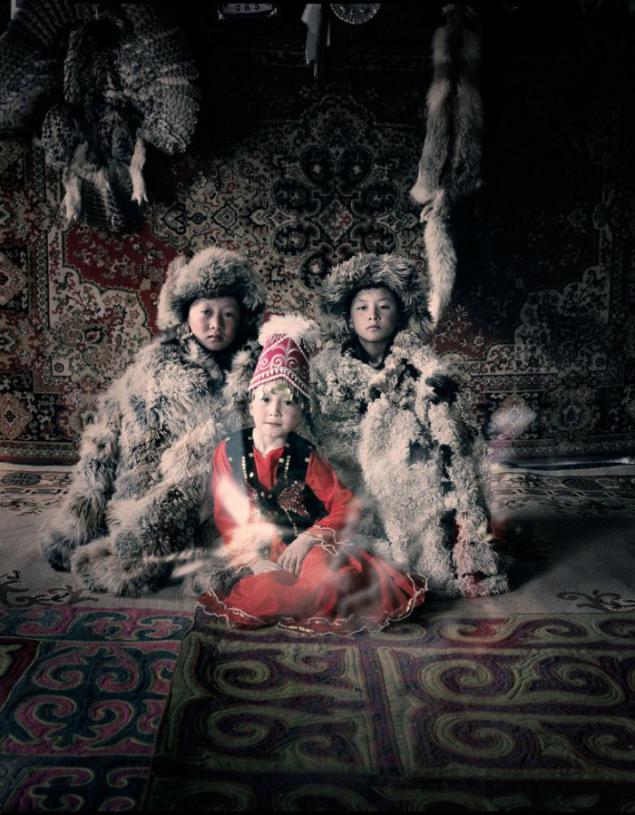
Kazakhs - semi-nomads and shepherds.
Many families in Kazakhstan is still several times a year move from place to place with their herds. Families with small herds remain closer to their "winter home" in the summer, but, nevertheless, to build a yurt. Summer yurt is richly decorated with embroidery, felt and woven patterns. (Photo and caption by Jimmy Nelson)

Ancient falconry - one of the many traditions and skills possessed by the Kazakhs, and for which they have managed to keep all these years.
Traditionally, local nomads dependent on their clan and herds, believed in the pre-Islamic cults sky, ancestors, fire and supernatural spirits of good and evil. (Photo and caption by Jimmy Nelson)
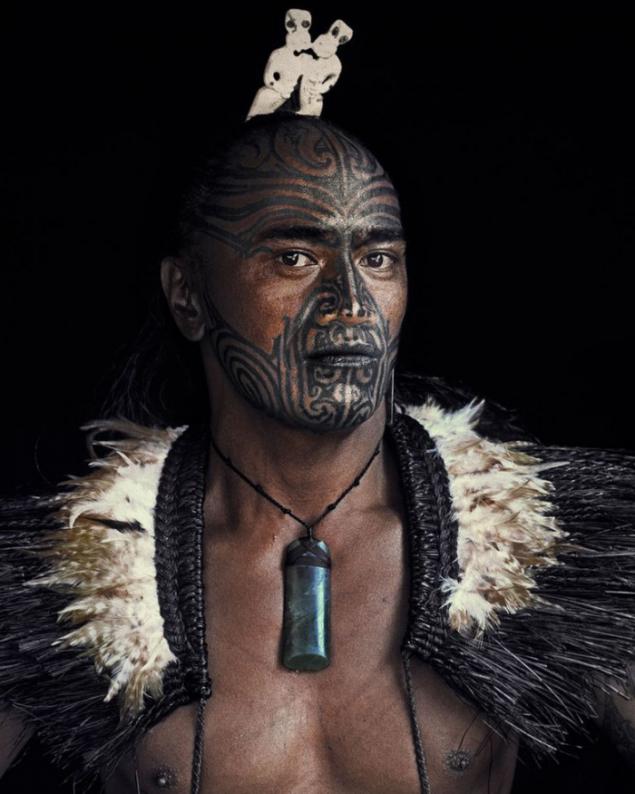
"Maori».
A long and interesting history of Maori descent can be traced back to the XIII century and the mythical homeland tribe called Gavaiki in Eastern Polynesia. Because of the long centuries of isolation Maori have established their own society with a distinctive art, a separate language and unique mythology. (Photo and caption by Jimmy Nelson)
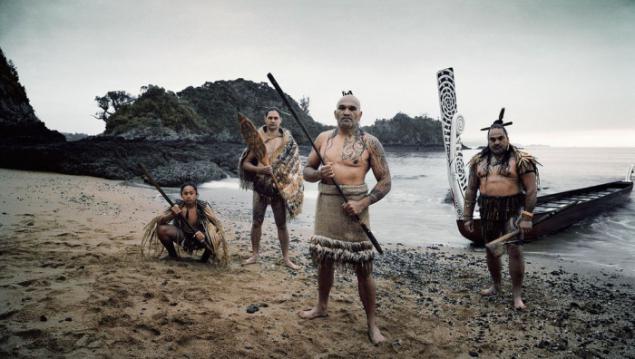
The main aspects of traditional Maori culture is art, dance, legends, tattoos and community. Although the arrival of European colonists in the XVIII century greatly influenced the lifestyle of Maori, many aspects of their traditional society remained unchanged even in the XXI century. (Photo and caption by Jimmy Nelson)
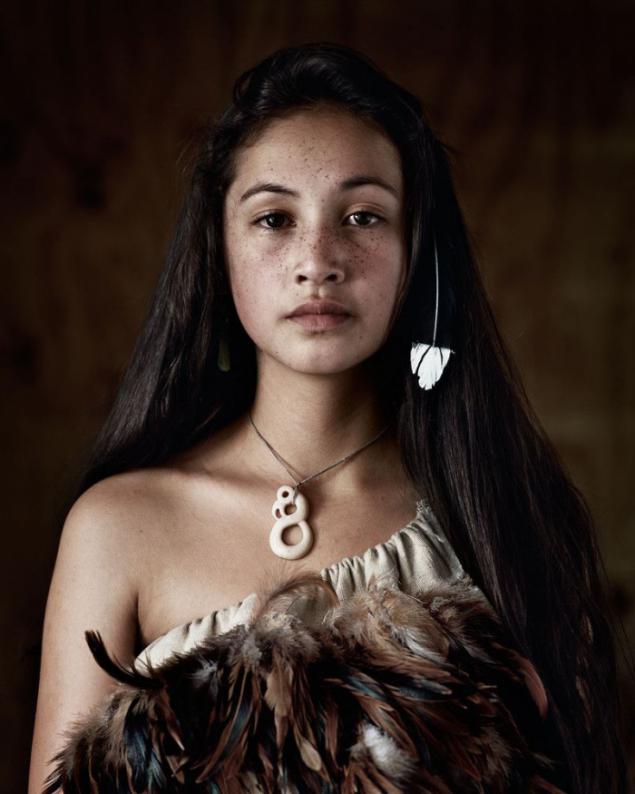
Kai - so called Maori food.
Their diet is based on poultry and fish, as well as supplemented with herbs and plant roots. In their tribal Maori gardens also grow root vegetables, including sweet potatoes, pumpkin and sweet potatoes. (Photo and caption by Jimmy Nelson)

©
Jimmy Nelson (Jimmy Nelson) traveled to different countries, and took the indigenous peoples of the Pacific, New Guinea, the Far North, Small peoples of Chukotka. The number of some very small and at any time may disappear completely

"Asaro with the Eastern Mountains».
The members of this tribe were covered with mud the whole body, except for the persons. In this case, all the people of Papua New Guinea has long been believed that the mud from the river Asaro poisoned. Instead of covering their faces with this alleged poisonous mud, people Asaro started making masks from stones that were heated and washed with water from the waterfalls. Masks these unusual shapes and traditionally decorated with various elements, such as very short or very long ears, reaches the chin, eyebrows over the length of the connection ears, horns or mouths on the side. (Photo and caption by Jimmy Nelson)

People tribe Asaro anoint themselves with mud, are frightening masks and brandishing spears.
According to legend, the "mud people" Defeat the enemy tribe and forced to flee to the river Asaro. The defeated tribe waited for the sunset, after which his men tried to escape. Enemies saw the dark figure rise from the river banks, all in the mud, and thought that they attack the river spirits. Terrified enemies Asaro ran back to his village. After that, all the neighboring villages converged on the view that the tribe Asaro helps the river itself. Smart elders saw this as an advantage and tried to do everything to spread the dirt tradition preserved. (Photo and caption by Jimmy Nelson)

"The Chukchi».
This ancient people living on the Chukotka Peninsula. Unlike other indigenous peoples of Siberia, Russian troops did not manage to conquer the Chukchi. But their culture and traditions suffered greatly during the Soviet period, as the vodka, and from environmental pollution. (Photo and caption by Jimmy Nelson)

Chukchi live on the mainland due to reindeer husbandry: they eat cooked venison, deer brain and bone marrow, as well as make the reindeer soup.
One of the traditional dishes prepared from the Chukchi semidigested moss from the stomach of the reindeer, mixed with blood, fat and pieces of cooked entrails of a deer. Kitchen coastal Chukchi based on meat walruses, seals, whales and marine algae. Both groups were fed frozen fish, as well as leaves and roots. Now Chukchi traditional dishes complemented canned vegetables and other products that they buy in stores. (Photo and caption by Jimmy Nelson)

Carving on bone and walrus tusks - the most advanced forms of folk art among the Chukchi.
Common themes: landscapes and scenes of everyday life - hunting, grazing deer and wildlife Chukotka. In traditional society, the Chukchi all those involved only men. Women have a sewing and embroidery classes, they have obtained excellent. (Photo and caption by Jimmy Nelson)

Due to the harsh climate and the complexities of life in the tundra hospitality and generosity are highly valued among the Chukchi. They believe that everything in this world has a soul. Traditional way of life is still preserved, but is constantly updated with something new. (Photo and caption by Jimmy Nelson)

"Goroka" (the capital of the province of Eastern Highlands Province in Papua - New Guinea).
The indigenous population of the second largest island in the world - one of the most non-uniform in the world. Harsh landscape and historical tribal war led to the destruction of vegetation and the appearance of different languages. Several different tribes scattered throughout the highlands. (Photo and caption by Jimmy Nelson)

Life in the mountainous villages of simple. There are a lot of good food, family ties are highly valued, as well as the wonders of nature. Local live hunting, gathering and agriculture. Tribal feuds - it habitual, and a male warrior spare no effort and imagination to hit the enemy tribe of his war paint and decorations. (Photo and caption by Jimmy Nelson)

The boy from the tribe Goghin. (Photo and caption by Jimmy Nelson)

Himba - ancient tribe of tall, slender and majestic shepherds.
Since the XVI century they live in scattered settlements, leading virtually unchanged way of life, surviving a war and drought. The structure of the tribe helps them to live in one of the harshest habitats of the planet. (Photo and caption by Jimmy Nelson)

"Juli».
It is believed that the first inhabitants of Papua - New Guinea migrated to the island more than 45 000 years ago. Today, more than 3 million people, half a heterogeneous population lives on the local uplands. Some of these communities for thousands of years are an unceasing tribal conflict with its neighbors. (Photo and caption by Jimmy Nelson)

Tribes fighting over land, women and pigs.
Much attention is paid to how to impress the enemy. The largest tribe - paint their faces in yellow, red and white, and is famous for its tradition of making beautiful wigs from their own hair. Ax with hook completes this very frightening picture. (Photo and caption by Jimmy Nelson)

Tari Valley with magnificent views of the valley below and the surrounding peaks. This high mountain forests with thundering waterfalls. The local tribes live by hunting, which involved mostly men, as well as gathering and agriculture - this is followed by women. Men are helping to liberate the land, but responsibility for everything else is on women. (Photo and caption by Jimmy Nelson)

"Kalam».
The eastern half of New Guinea gained full independence from Australia in 1975, and when there was a state of Papua - New Guinea. Local indigenous people - one of the most diverse in the world. Traditionally, the different tribes scattered high plateau and live in small agricultural clans. (Photo and caption by Jimmy Nelson)

Hats decorated with feathers (cockatoos, parrots, lories and birds of paradise).
Small round shells kin hanging out of the hole in the nose, and some members of the tribe are inserted into the nose of the bird of paradise feathers. (Photo and caption by Jimmy Nelson)

These tribes live by hunting (men), as well as gathering and agriculture (women). (Photo and caption by Jimmy Nelson)

Kazakhs - the descendants of Turkic, Mongolian and Indo-Iranian tribes and the Huns, who inhabited the territory between Siberia and the Black Sea.
This semi-nomads who wandered with their herds in the mountains and valleys of western Mongolia to the XIX century. (Photo and caption by Jimmy Nelson)

Kazakhs - semi-nomads and shepherds.
Many families in Kazakhstan is still several times a year move from place to place with their herds. Families with small herds remain closer to their "winter home" in the summer, but, nevertheless, to build a yurt. Summer yurt is richly decorated with embroidery, felt and woven patterns. (Photo and caption by Jimmy Nelson)

Ancient falconry - one of the many traditions and skills possessed by the Kazakhs, and for which they have managed to keep all these years.
Traditionally, local nomads dependent on their clan and herds, believed in the pre-Islamic cults sky, ancestors, fire and supernatural spirits of good and evil. (Photo and caption by Jimmy Nelson)

"Maori».
A long and interesting history of Maori descent can be traced back to the XIII century and the mythical homeland tribe called Gavaiki in Eastern Polynesia. Because of the long centuries of isolation Maori have established their own society with a distinctive art, a separate language and unique mythology. (Photo and caption by Jimmy Nelson)

The main aspects of traditional Maori culture is art, dance, legends, tattoos and community. Although the arrival of European colonists in the XVIII century greatly influenced the lifestyle of Maori, many aspects of their traditional society remained unchanged even in the XXI century. (Photo and caption by Jimmy Nelson)

Kai - so called Maori food.
Their diet is based on poultry and fish, as well as supplemented with herbs and plant roots. In their tribal Maori gardens also grow root vegetables, including sweet potatoes, pumpkin and sweet potatoes. (Photo and caption by Jimmy Nelson)

©




